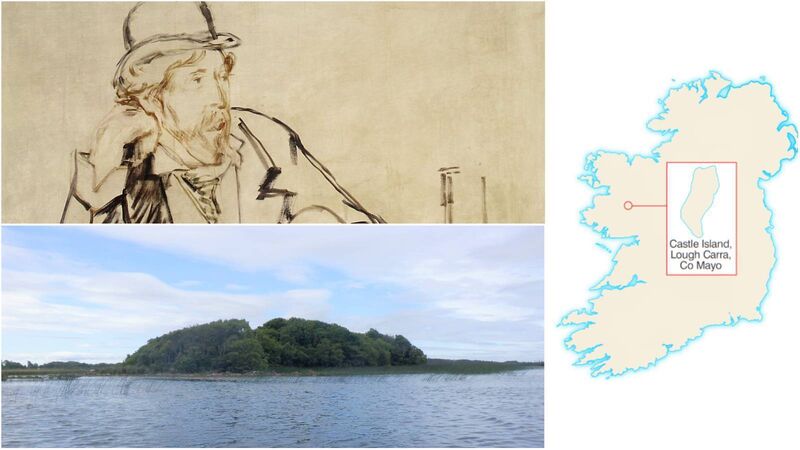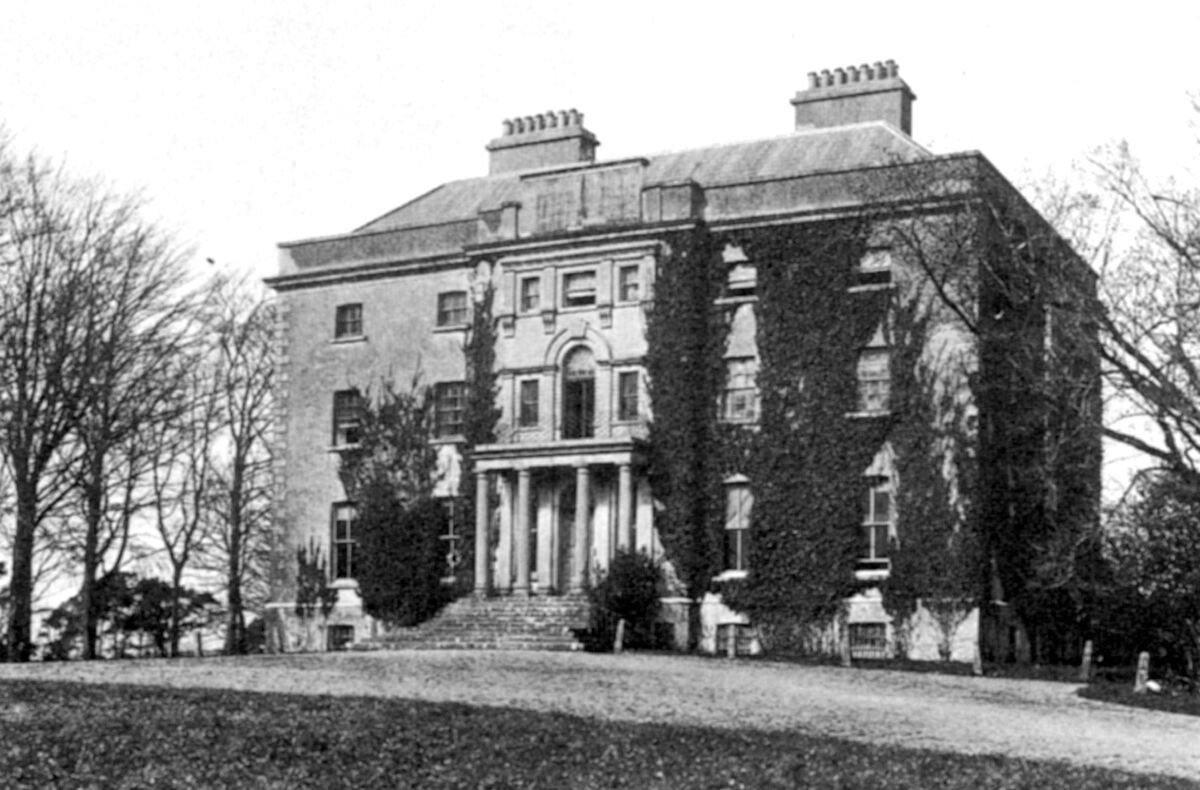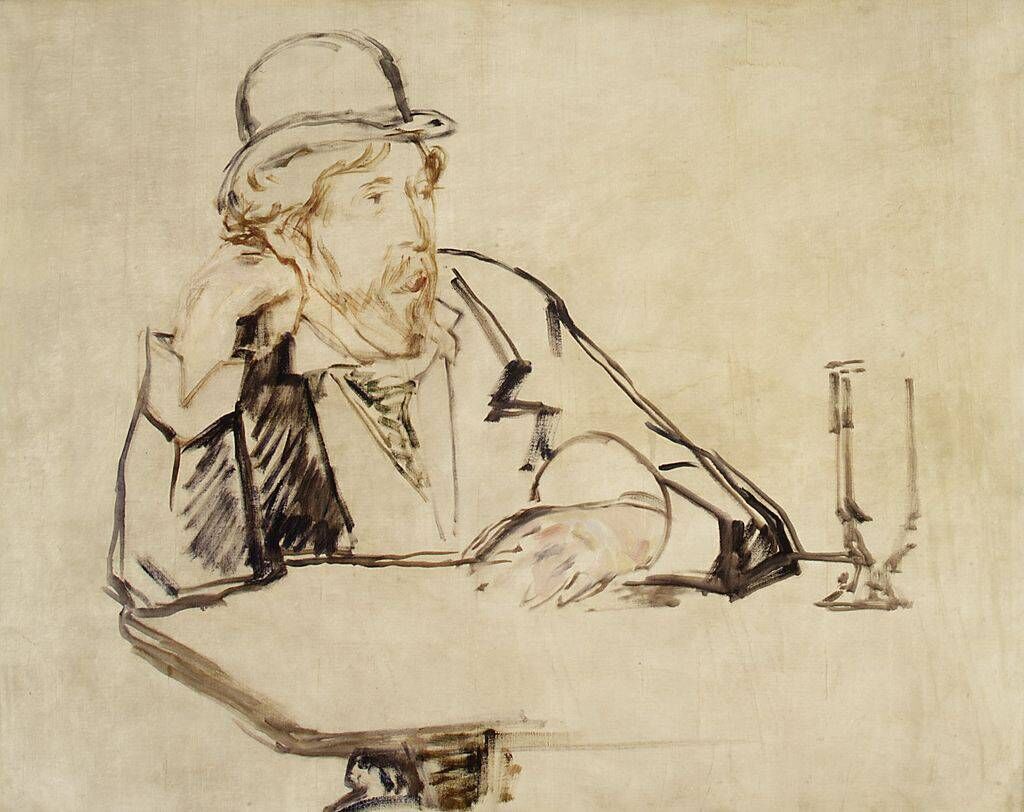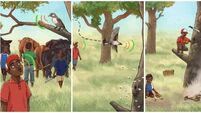Remains of the Irish writer painted by Manet and Degas are on Mayo's Castle Island

Castle Island, Lough Carra, County Mayo, where the ashes of writer George Moore (seen here in an Édouard Manet drawing) are interred
In the centre of the sparkling County Mayo Lough Carra lies a wooded island. The other islands scattered around are also heavily wooded but this one is different in a big way. It holds the gravestone of an eminent writer and cultural powerhouse. And not many of our islands can lay such a claim.
When I read in by Northern Ireland writer, Nicholas Allen, that this island is the final resting place of George Moore, I just had to visit.
Departing from the eastern shore of the lake is the optimum way to approach across a kilometre of open lake. The burnt-out ruins of the Moore mansion is obscured from view in the woods to the north of the lake. And that’s no bad thing, for what a forlorn sight it is up close.
There are a couple of small islands en route including Castlehag Island where a tower house of the Bourke clan was destroyed by the governor of Connacht Richard Bingham in the 16th century.
A rare image of the funeral urn of George Moore which was executed by Miss Aileen Barnes. The writer George Moore died in 1933, was cremated and his ashes placed in this urn which was deposited in a rock on Castle Island in Lough Carra which Moore Hall in Co . Mayo over looked. pic.twitter.com/XXt4UPliRf
— David Hicks (@davidhicksbook) September 15, 2019
Castle Island is a large island in comparison to its peers at 1.5 acres. It is probable that no one has ever lived there though there are the possible remains of a bawn (medieval wall) indicating settlement intentions. There is no pier or even small strand to land at, and on circling about 90% of the island by kayak it looked like no entrance or gravestone would be revealed. And then there it was, innocuous and discreet. A simple inscribed headstone and cross covered in lichen, reads: ‘George Moore: Born Moore Hall 1852 died 1833 London; He deserted his family and friends/ For his Art/ But because he was faithful to his Art/ His family and Friends/ Reclaimed his ashes for Ireland.’ And that’s it. Nicholas Allen writes that “for sake of propriety” the ashes were interred here rather than scattered on the lake. The urn that holds the writer’s ashes depicts a Bronze Age Greek scene.
Moore was born at Moore Hall in 1852 and moved to Paris to study art aged 18. In that melting pot he knew everybody and anybody. And his features must have been the subject for more artists than almost anyone of similar renown. Among the artists to paint Moore were Manet, Degas, and later Orpen and Yeats. He was a friend of writers too: The Russian novelist Turgenev and the Frenchman Emile Zola. Ten years later, and with no real progress in his artistic career he moved to London to pursue a writing career.

With moderate success as a novelist on the London scene he returned to Ireland to live in Dublin and became immersed in the literary revival along with Yeats and Lady Gregory. He was involved with the establishment of two major cultural institutions: the Abbey Theatre and the Gaelic League. Short stories and plays followed which were well received.

There is no doubting his skill as a writer. Here in . written in 1912, is his description of the River Dodder as it flowed through Dublin: “There is a beautiful bend in the stream near the dye-works, the trees grow straight and tall and out of them the wood-pigeon clatters.” This mellifluous passage is counterpointed by a description of the lower Dodder and eschews the romantic for dirty realism. “Green, slimy, stenchy at Donnybrook, at Ballsbridge the Dodder reminds one of a steep, ill-paven street into which many wash-tubs have been emptied; and after Ballsbridge it reaches the sea; as has been said, black and inert as a crocodile.”
Moore received famous literary and political figures to the late 18th century Moorehall (or Moore Hall) including Oliver St John Gogarty, Lady Gregory, Douglas Hyde, Maria Edgeworth, and WB Yeats. The mansion was burnt down in 1923 by anti-Treaty forces owing to perceived family allegiances to the Free State.

It is curious that Castle Island is so-called as there is no castle on the island. Perhaps it is a reference to Castlehag Island. Locals know it as Moore’s Island which is fitting.
: No ferry. Kayak from northeastern shore of Lough Carra, 4km north of Ballinrobe, County Mayo.
: , Nicholas Allen, Oxford; historicalballinrobe.com







